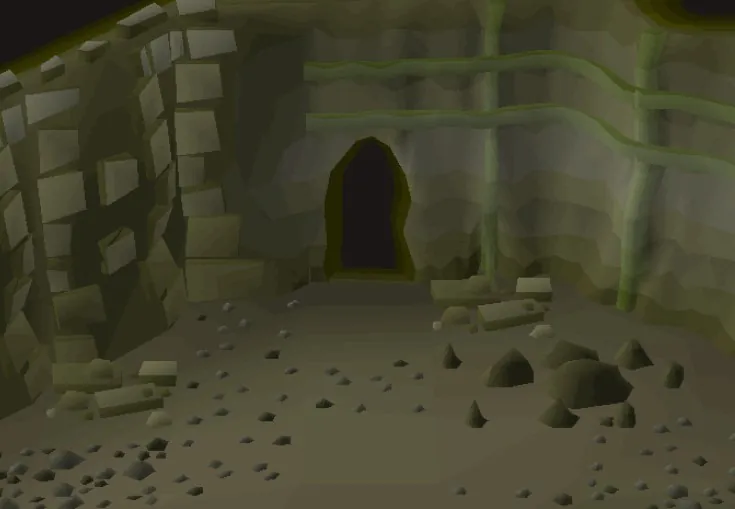Cave bugs are a unique and intriguing species that can be found in the world of Old School RuneScape (OSRS). These bugs can be found in many different caves and other areas throughout the game, and they can offer a variety of rewards for players who are willing to take the time to hunt them down. In this article, we will discuss all you need to know about cave bugs, from where to find them, to the rewards they can offer, and the best strategies to use while hunting them. Whether you’re an experienced bug hunter or just starting out, this guide will provide you with all the information you need to become a master at bug hunting.
Types of Caves in OSRS

Caves are underground spaces formed by erosion and other geological processes. They can be found in various shapes and sizes, and they can be classified into several different types. These types of caves include solution caves, lava tubes, sea caves, talus caves, and ice caves.
Solution Caves are formed when acidic rainwater dissolves the surrounding rock, creating tunnels and chambers. The most common type of solution cave is the limestone cave, which is found in many parts of the world.
Lava Tubes are formed when a river of molten lava is cooled on the surface and the top layer hardens, forming a tube. These tubes can range from a few meters to hundreds of kilometers in length.
Sea Caves are formed by wave action on the shoreline. These caves are often found in coastal regions, and are usually smaller than other types of caves.
Talus Caves are formed when a rockfall creates a pile of debris. These piles can create an underground shelter, and they are often used as homes by some species of cave bugs.
Ice Caves are formed when a glacier or snowfield melts and the water carves out a space in the ice. These caves can be found in high altitude or polar regions, and they can be dangerous due to their unstable nature.
Each type of cave provides a unique environment for the organisms that live there. Caves are also important for research purposes, as they provide valuable information about the Earth’s geologic history. Cave bugs can be found in all types of caves, and they play an important role in these habitats.
Strategies for Catching Cave Bugs
Strategy 1: Patience
Catching cave bugs requires a lot of patience and time. It is not advisable to rush into things as it can be dangerous. When approaching a cave, it is important to make sure that the environment is safe and that there are no dangerous creatures lurking in the darkness. Additionally, cave bugs are typically very slow-moving, so it can take a while to catch them. It is important to remain focused and maintain a high level of patience as it can take some time for the bugs to be spotted and captured.
Strategy 2: Using a Flashlight
Using a flashlight is essential when catching cave bugs. The bugs will be very difficult to spot in the dark if a flashlight is not used. A flashlight is also helpful in illuminating areas of the cave where the bugs may be hiding. Additionally, the light can be used to attract the bugs so they can easily be seen and captured.
Strategy 3: Using a Net
Using a net can be helpful in catching cave bugs. It is important to use a sturdy net that is capable of trapping the bugs without harming them. Additionally, the net should be large enough to cover a large area. The net should also be checked regularly to ensure that the bugs have been captured.
Strategy 4: Using Bait
Using bait can be a great way to attract cave bugs and make them easier to capture. It is important to use bait that is specifically designed for cave bugs and not any other type of creature. Additionally, the bait should be placed in areas of the cave where the bugs are most likely to be found.
Strategy 5: Wearing Protective Gear
When catching cave bugs, it is important to wear protective gear. This includes gloves, a long-sleeved shirt, and long pants. This will help to protect the skin from any bites or stings that the bugs may cause. Additionally, it is important to wear a headlamp or flashlight to illuminate the area and make it easier to spot the bugs.
Strategy 6: Checking the Environment
Before attempting to capture any cave bugs, it is important to check the environment for any hazards that may be present. This includes checking for any dangerous creatures that may be in the area. Additionally, it is important to make sure that the environment is safe and that there are no poisonous plants or other items that may be hazardous.
Benefits of Cave Bugs

Cave bugs, also known as troglobites, have been on the planet for millions of years, and they have some incredible benefits to offer. They are a perfect example of evolution and adaptation, having adapted to their environment in order to survive and thrive. Here are some of the benefits of cave bugs:
A Source of Food
Cave bugs are an excellent source of food for other animals. Since they are adapted to their environment and have evolved to survive in it, they are able to survive and thrive in the extreme conditions of the cave, providing a reliable and nutritious food source.
A Source of Nutrients
Cave bugs are also a valuable source of essential nutrients for other animals. They are a rich source of proteins, minerals, and vitamins, which are needed for the proper functioning of the body. As a result, they provide a valuable source of sustenance to animals that live in the cave.
A Source of Shelter
Cave bugs are also a valuable source of shelter for other animals. They provide a safe and secure environment, away from predators, for other creatures to hide and stay safe. As a result, they help to create a safe and secure environment for animals that live in the cave.
A Source of Pollination
Cave bugs are also a valuable source of pollination for other animals. They help to spread the pollen of plants, pollinating them and helping them to thrive. As a result, they help to ensure that plants are able to survive and thrive in their environment.
A Source of Bio-Diversity
Cave bugs are also a valuable source of bio-diversity for other animals. They provide a unique and diverse range of species that inhabit the cave, which helps to create a more vibrant and diverse ecosystem. As a result, they help to ensure that the cave environment is full of life and diversity.
A Source of Education
Cave bugs are also a valuable source of education for other animals. By studying them, we can learn more about the evolution and adaptation of species, as well as the intricate workings of the cave environment. As a result, they provide an excellent opportunity to learn more about the world around us.
Conclusion
Cave bugs are a fascinating group of creatures that play an important role in the ecosystem of caves. They can provide valuable insight into the geological history of the cave and provide information about the local environment. They have adapted to live in a harsh environment and are able to survive without food or water for extended periods of time. Cave bugs also have interesting behaviors and can provide insight into the behavior of other animals. They are an important part of the underground ecosystem and should be studied and appreciated.
Also Read: A Star Wars Thong Goes Viral on TikTok
Frequently Asked Questions
What kind of bugs live in caves?
A variety of bugs live in caves, including beetles, mites, flies, ants, roaches, spiders, and other arthropods. Many of these bugs are adapted to living in the dark and damp conditions of the cave environment.
Are cave bugs dangerous?
While some cave bugs may bite or sting, most of them are not dangerous to humans. However, it is important to use caution when handling any type of bug, as some may carry diseases or be poisonous.
How do cave bugs survive in such a dark environment?
Cave bugs are adapted to living in the dark and damp conditions of the cave environment. They have evolved special features such as enlarged eyes, long antennae, and bright colors that help them navigate their way around the cave. They also have adapted to having less food available, and some species have even developed the ability to survive without food for long periods of time.
Are cave bugs beneficial to the environment?
Yes, cave bugs play an important role in the cave ecosystem. They provide food for many other creatures, such as bats and birds, and they also help break down organic matter and keep the cave clean.
What is the best way to avoid cave bugs?
The best way to avoid cave bugs is to take precautions when exploring caves. Wear long pants and long sleeves, and use a flashlight to help you spot any bugs. If you come across any bugs, it is best to leave them alone and not handle them.

![Abofahdsh FF APK [Latest Version] v5.1 Download For Android](https://apkhuts.com/wp-content/webp-express/webp-images/uploads/2024/03/image-150x150.png.webp)




Comments closed.